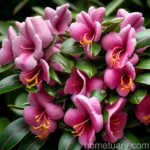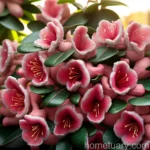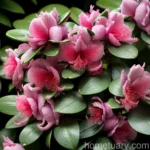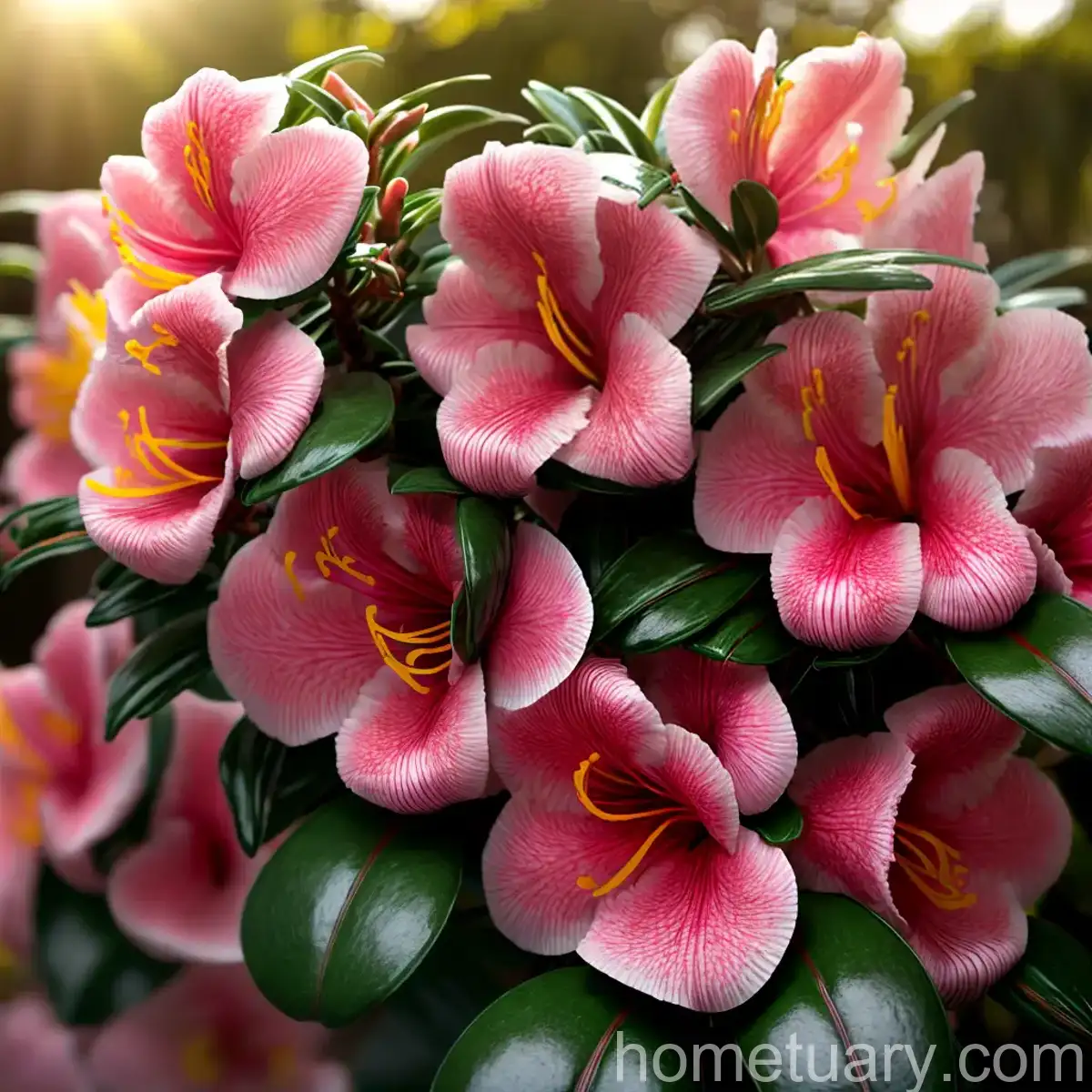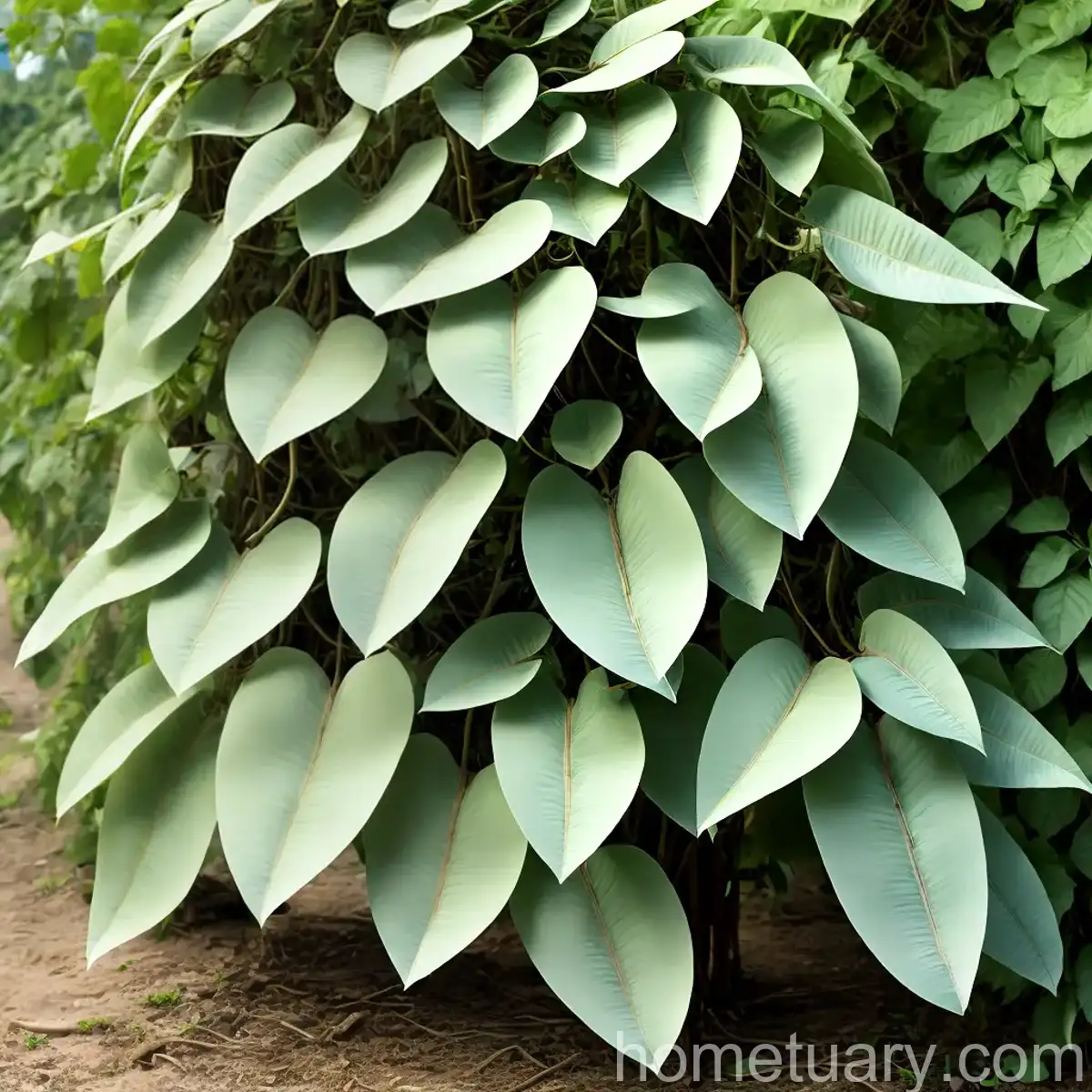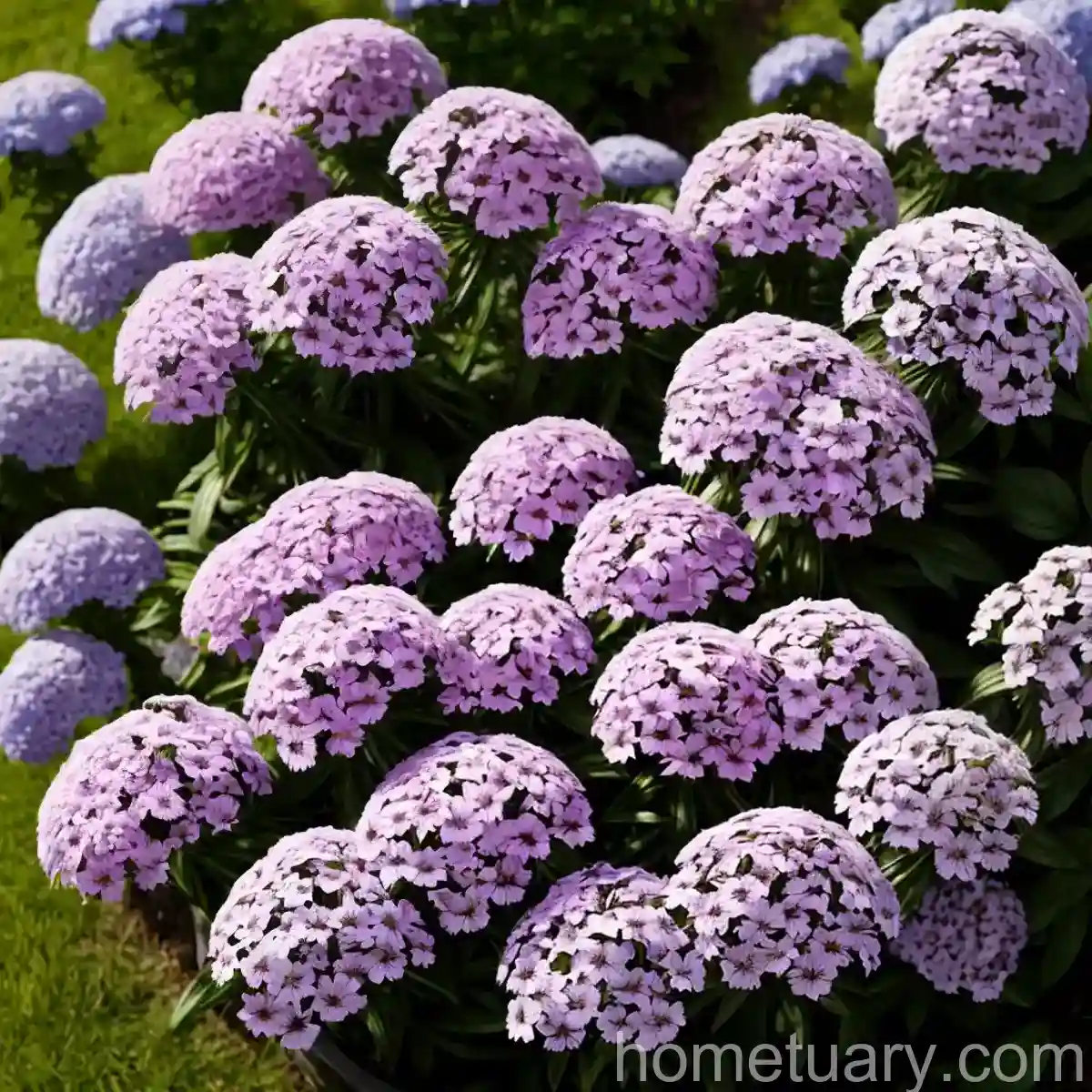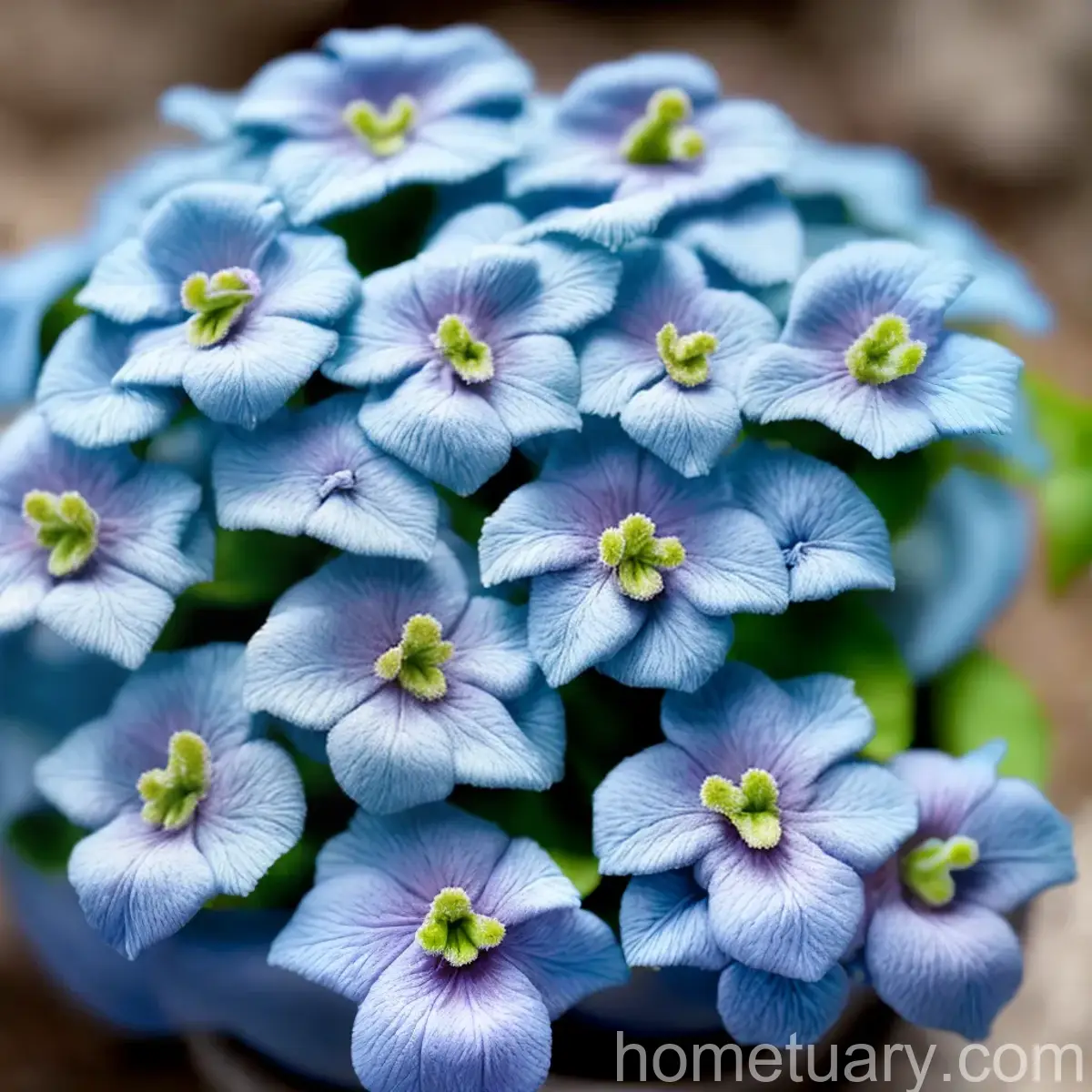Azalea (Rhododendron ‘Klondyke’): A Comprehensive Guide
Azaleas are beloved flowering shrubs that add a pop of color to any garden or landscape. Among the vast array of azalea cultivars, the Rhododendron ‘Klondyke’ stands out for its stunning golden-yellow blooms and compact growth habit. In this comprehensive guide, we will delve into the various aspects of caring for and cultivating the azalea (Rhododendron ‘Klondyke’). From its cultural preferences to common diseases and pests, by the end of this guide, you’ll be equipped with all the knowledge you need to successfully grow and maintain this beautiful plant in your own garden.
What is Azalea (Rhododendron ‘Klondyke’)?
The Rhododendron ‘Klondyke’ is a deciduous azalea cultivar that is prized for its vibrant blooms and relatively compact size. Known for its stunning golden-yellow flowers, this variety adds a delightful splash of color to any garden during the flowering season. The ‘Klondyke’ is a relatively low-maintenance plant, making it a popular choice for gardeners looking to add a touch of elegance and vibrancy to their outdoor spaces.
Key Takeaways – Azalea (Rhododendron ‘Klondyke’)
Before we delve into the specifics of caring for the Rhododendron ‘Klondyke’, let’s highlight the key takeaways that will be covered in this comprehensive guide:
Culture
- Understanding the cultural preferences of the ‘Klondyke’ cultivar.
- Ideal growing conditions for optimal health and vigor.
Uses
- Exploring the various landscaping and ornamental uses of the ‘Klondyke’ azalea.
- How to incorporate it into your garden design effectively.
Water
- Watering requirements to keep the plant healthy and hydrated.
- Tips for proper irrigation practices.
Sunlight
- Sunlight needs of the ‘Klondyke’ azalea for optimal growth and flowering.
- Understanding its tolerance to different light conditions.
Fertilizer
- Nourishing the ‘Klondyke’ with the right fertilizers for healthy foliage and prolific blooms.
- Fertilization schedule and best practices.
Soil
- Understanding the soil preferences of the ‘Klondyke’ azalea for thriving growth.
- Tips for amending soil to meet its specific requirements.
Pruning
- Proper pruning techniques to maintain the shape and health of the plant.
- Pruning calendar and best practices for the ‘Klondyke’ cultivar.
Propagation
- Methods for propagating the ‘Klondyke’ azalea to expand your garden.
- Tips for successful propagation.
Container Popularity
- Exploring the popularity of growing the ‘Klondyke’ in containers.
- Container gardening tips for this particular cultivar.
Common Diseases
- Identification and management of common diseases that affect the ‘Klondyke’ azalea.
- Prevention and treatment strategies.
Disease Diagnosis
- How to identify and diagnose diseases in the ‘Klondyke’ azalea.
- Understanding the symptoms and signs of common ailments.
Common Pests
- Identifying and controlling pests that may affect the ‘Klondyke’ cultivar.
- Pest management strategies.
Botanist’s Tips
- Expert tips and insights for successfully growing and maintaining the ‘Klondyke’ azalea.
- Recommendations for optimal care.
Fun Facts
- Interesting and intriguing facts about the ‘Klondyke’ cultivar.
- Uncovering unique characteristics and qualities.
Links to External Resources
- Additional online resources for further exploration of azalea (Rhododendron ‘Klondyke’) care and cultivation.
- Accessing reputable sources for additional information and support.
Now that we have outlined the key takeaways, let’s delve into the specifics of caring for the Azalea (Rhododendron ‘Klondyke’) in detail.
Azalea (Rhododendron ‘Klondyke’) Care
As a dedicated plant scientist and enthusiast, I understand the importance of providing comprehensive guidance on the care and cultivation of plants. The ‘Klondyke’ azalea, with its stunning golden blooms, deserves attention to detail when it comes to meeting its specific needs for optimal growth and flowering. Let’s explore the various aspects of caring for this beautiful cultivar.
Culture
The cultural preferences of the Rhododendron ‘Klondyke’ play a pivotal role in its overall health and vigor. Understanding the ideal cultural conditions for this cultivar is essential for ensuring its longevity and prolific blooming.
Ideal Growing Conditions
- Climate: The ‘Klondyke’ azalea thrives in temperate climates, preferring regions where winters are not excessively harsh and summers are relatively mild. It performs best in USDA hardiness zones 6-8.
- Temperature: This cultivar prefers moderate temperatures and may benefit from protection against extreme heat or cold. Provide adequate insulation during harsh winters to protect the plant from frost damage.
- Humidity: Azaleas, including the ‘Klondyke’, appreciate moderate to high humidity levels. If you live in a drier climate, consider supplemental humidity through misting or using a humidifier in indoor environments.
Uses
The ‘Klondyke’ azalea offers a range of versatile uses in landscaping and ornamental gardening. Understanding how to effectively utilize this cultivar can elevate the aesthetic appeal of your outdoor spaces.
Landscaping and Ornamental Uses
- Mass Planting: The vibrant golden blooms of the ‘Klondyke’ make it an ideal candidate for mass planting, creating a stunning display of color when planted in groups.
- Borders and Edges: Its compact growth habit and showy flowers make the ‘Klondyke’ suitable for border planting and edging along pathways and garden beds.
- Mixed Plantings: Pairing the ‘Klondyke’ with other spring-flowering shrubs and perennials can create a harmonious and dynamic landscape design.
Water
Proper watering is crucial for the overall health and vitality of the ‘Klondyke’ azalea. Understanding its specific water needs is essential for preventing stress and promoting lush growth.
Watering Requirements
- Frequency: During the growing season, the ‘Klondyke’ azalea benefits from regular watering, especially during dry spells. Aim to keep the soil consistently moist but not waterlogged.
- Moisture Levels: The soil should remain evenly moist, and the plant should not be allowed to wilt from lack of water.
- Mulching: Applying a layer of organic mulch around the base of the plant can help retain soil moisture and reduce the frequency of watering.
Sunlight
Azaleas, including the ‘Klondyke’ cultivar, have specific sunlight requirements for healthy growth and prolific flowering. Understanding its needs for light exposure is integral to its overall care.
Sunlight Needs
- Light Exposure: The ‘Klondyke’ azalea thrives in dappled or partial sunlight, especially during the morning hours. It benefits from some protection from intense afternoon sun, particularly in warmer climates.
- Shade Tolerance: While it appreciates sunlight, the ‘Klondyke’ can also tolerate partial shade, making it suitable for planting under the canopy of larger trees or in partially shaded areas.
Fertilizer
Fertilizing the ‘Klondyke’ azalea is essential for providing it with the necessary nutrients for healthy foliage and abundant flowering. Understanding the right fertilizers and application practices is crucial for optimal care.
Fertilizing Tips
- Acidic Fertilizer: Azaleas, including the ‘Klondyke’, thrive in acidic soil conditions. Use a balanced, slow-release fertilizer formulated for acid-loving plants to provide essential nutrients without drastically altering the soil pH.
- Application Timing: Apply fertilizer in early spring before new growth emerges and again in late spring or early summer to support the development of flower buds.
- Avoid Overfertilization: While azaleas benefit from regular feeding, avoid overfertilization, as excessive nutrients can harm the plant and contribute to root burn.
Soil
The soil preferences of the ‘Klondyke’ azalea play a crucial role in its overall health and performance. Understanding how to create an ideal soil environment for this cultivar is essential for successful cultivation.
Best Soil for Rhododendron ‘Klondyke’
- Acidic pH: Azaleas prefer soil with a pH range of 4.5 to 6.0. Test the soil pH and amend it with suitable amendments, such as elemental sulfur, to lower the pH if necessary.
- Well-Draining: The soil should be well-draining to prevent waterlogging, which can lead to root rot. Incorporate organic matter, such as compost or peat moss, to improve soil structure and drainage.
- Mulching: Applying a layer of organic mulch around the base of the plant helps retain soil moisture, suppresses weeds, and gradually enriches the soil as it breaks down.
Pruning
Proper pruning is essential for maintaining the shape, vigor, and flowering potential of the ‘Klondyke’ azalea. Understanding the best practices for pruning this cultivar is integral to its overall care.
Pruning Techniques
- Timing: Prune the ‘Klondyke’ azalea immediately after the flowering period to avoid removing potential flower buds for the following season.
- Deadheading: Remove spent blooms to encourage additional flowering and maintain a tidy appearance.
- Shape Maintenance: Trim back any straggly or overgrown branches to promote a compact and well-branched growth habit.
Propagation
The ability to propagate the ‘Klondyke’ azalea allows for the expansion of your garden or the sharing of this beautiful cultivar with fellow gardening enthusiasts. Understanding the methods for successful propagation is essential for cultivating new plants.
Propagation Methods
- Softwood Cuttings: Propagate the ‘Klondyke’ azalea from softwood cuttings taken in early summer. Use a rooting hormone and provide the appropriate humidity and warmth for successful rooting.
- Air Layering: Another effective method for propagating azaleas is air layering. This technique involves creating a wound on a stem, applying rooting hormone, and wrapping the wounded area with moist sphagnum moss to encourage root development.
Container Popularity
The ‘Klondyke’ azalea is well-suited for container gardening, offering flexibility and versatility in how it can be incorporated into outdoor spaces. Understanding its suitability for container growth and essential care practices is pivotal for successful cultivation.
Growing Azaleas in Containers
- Container Selection: Choose a spacious and well-draining container with adequate drainage holes to prevent waterlogging.
- Acidic Potting Mix: Use a high-quality, acidic potting mix designed for azaleas and camellias to provide the appropriate growing medium for containerized ‘Klondyke’ azaleas.
- Regular Watering: Containerized azaleas may require more frequent watering, especially during hot weather, to prevent moisture stress.
Common Diseases
Identifying and understanding the common diseases that can affect the ‘Klondyke’ azalea is crucial for implementing effective disease management strategies and promoting plant health.
Disease Resistance
- Powdery Mildew: Azaleas, including the ‘Klondyke’ cultivar, can be susceptible to powdery mildew, a fungal disease that appears as a white powdery coating on the leaves. Provide adequate air circulation and avoid overhead watering to minimize the risk of powdery mildew.
- Leaf Spot: Leaf spot diseases can affect azaleas, causing dark spots or lesions on the foliage. Proper sanitation, including the prompt removal of diseased leaves, can help prevent the spread of leaf spot.
Disease Diagnosis
Recognizing the symptoms and signs of common diseases that affect the ‘Klondyke’ azalea is essential for timely intervention and effective disease management.
Identifying Common Diseases
- Leaf Discoloration: Yellowing or browning of the leaves may indicate nutrient deficiencies, diseases, or environmental stress. Conduct a thorough examination to determine the underlying cause and implement appropriate measures.
- Fungal Infections: The presence of unusual growth or discoloration on the foliage or stems may indicate fungal infections. Proper diagnosis is essential for selecting the appropriate treatment.
Common Pests
Pests can pose a threat to the health and beauty of the ‘Klondyke’ azalea, making pest identification and control integral to its care and maintenance.
Pest Control
- Azalea Lace Bug: This common pest can cause stippling and discoloration on the leaves. Implement natural predators or consider targeted insecticidal treatments if populations become problematic.
- Caterpillars: Certain caterpillar species, such as the azalea caterpillar, may feed on the foliage of azaleas. Handpick caterpillars or use biological controls to manage infestations.
Botanist’s Tips
As a plant scientist with a passion for cultivating and studying plants, I’d like to offer some additional tips and insights for successfully growing and maintaining the ‘Klondyke’ azalea.
Expert Recommendations
- Mulching: Applying a layer of organic mulch around the base of the ‘Klondyke’ azalea provides multiple benefits, including moisture retention, weed suppression, and gradual enrichment of the soil as the mulch breaks down.
- Spring Pruning: Prune the ‘Klondyke’ azalea immediately after the flowering period to shape the plant and encourage new growth and branching.
Fun Facts
The ‘Klondyke’ azalea has several unique characteristics and qualities that make it a standout cultivar in the world of azaleas.
Intriguing Qualities
- Vibrant Bloom Color: The golden-yellow blooms of the ‘Klondyke’ are a striking and rare color in the world of azaleas, making this cultivar highly sought after by gardeners and collectors.
- Compact Growth Habit: This cultivar’s relatively compact size makes it suitable for smaller garden spaces, patio containers, and mixed border plantings.
Links to External Resources
For further exploration of azalea (Rhododendron ‘Klondyke’) care and cultivation, I recommend referring to the following external resources:
With these comprehensive insights into the care and cultivation of azalea (Rhododendron ‘Klondyke’), you are well-equipped to embark on a fulfilling journey of growing and enjoying this captivating cultivar. Whether you’re a seasoned gardener or a newcomer to the world of azaleas, the ‘Klondyke’ azalea offers a wealth of beauty and charm to enhance your outdoor spaces. Happy gardening!




